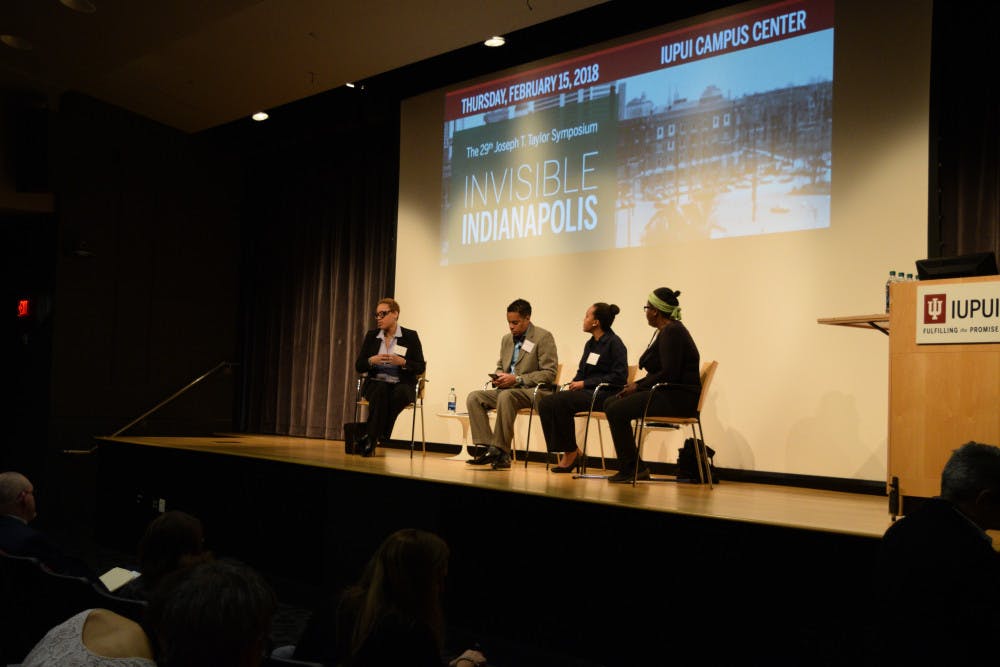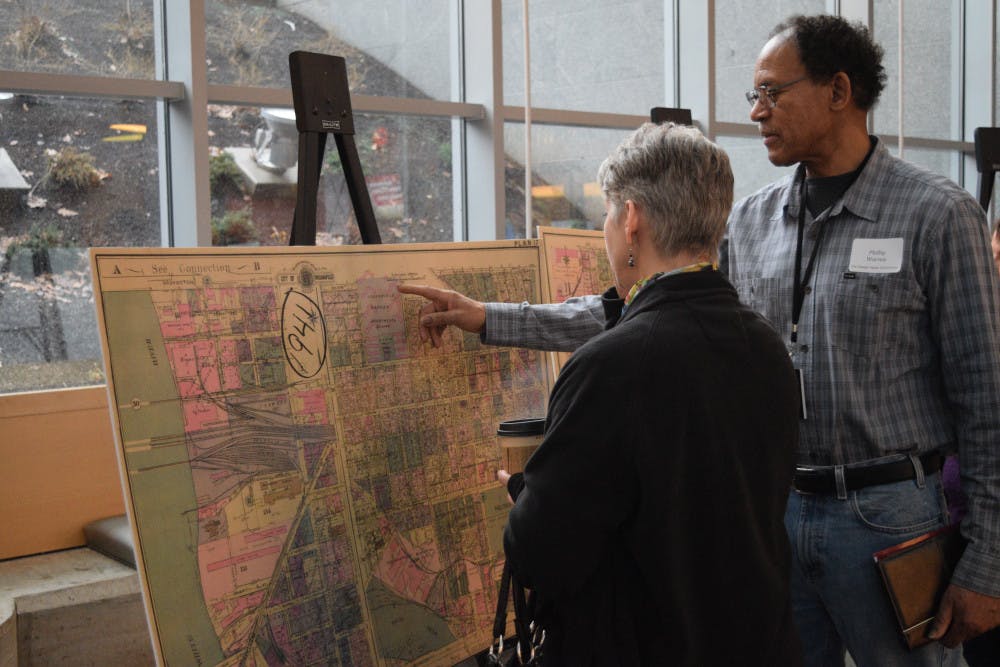On Thursday,Feb.15, IUPUI’s anthropology department presented the 29th Taylor Symposium, “Invisible Indianapolis: Race and Heritage in the Circle City.” Before the luncheon Excellence in Diversity Awards and keynote speaker, attendees saw the city and anthropology through a new perspective.
Responsibility for the Taylor Symposium rotates through the School of Liberal Arts’ departments alphabetically. Dr. Susan Hyatt and Dr. Paul Mullins organized and lead the proceedings. Together they created Invisible Indianapolis, a community-based research project studying the histories Indianapolis’ marginalized populations, especially those displaced by IUPUI’s construction.
“You can’t undo displacement once it’s happened, but I think it’s tremendously meaningful for people to know that we remember and honor that history now since he did that work,” Hyatt said.
This research may sound unconventional to the uninitiated. It’s part of historic archaeology, a branch of research that bucks the popular conception of the ancient or exotic and focuses on the physical remains of the last 500 years of human history.
Historic archaeologists dig unglamourous sites and tell the stories of ordinary people who are often underrepresented in cultural memory.
“A lot of people think of archaeology and they think of dinosaur bones, but it’s also the trash that our ancestors threw down the outhouse hole,” Kate Scott, a reference department worker at the Indiana Historical Society, commented.
Mullins told the story of a certain two-story outhouse to introduce the first address. From 1908-1958, it sat where the Barnes & Noble Starbucks sits today. In 2007, Mullins and his students excavated the site as the Campus Center’s construction began. This example of urban archaeology lead into the introduction of Dr. Krysta Ryzewski.
Ryzewski met Mullins and Hyatt last spring at a similar event. She described her work in Detroit for Wayne State University as the “younger, less organized cousin” of Invisible Indianapolis.
She told of excavating Little Harry’s Speakeasy, a local legend, and debunking several myths about it. But for all the fun of digging speakeasy tunnels and searching for bootlegging paper trails, this work deals in sad stories. Another project with the Brewster-Douglass Housing Projects brought the nature of public archaeology and preservation into question.
The Brewster-Douglass homes were predominately African-American and used from the 1930s to the 1950s. In 2014, the empty towers were demolished to make new affordable housing, but the federal loan application failed. Dan Gilbert, founder of Quicken Loans, bought the empty space. Private ownership means archaeological surveying is not mandatory. Ryzewski got access to an important site, but only because it was in the backyard of a house being renovated for an HGTV program.
“I kind of fear in some regard this will be the way of the future,” Ryzewski said in her speech.
But physical evidence is just half of these projects. Representing communities themselves is crucial to bringing ignored stories to the foreground.
Following Ryzewski’s presentation was a panel moderated by Dr. Ronda Henry Anthony, an associate professor of English and Africana studies and another friend of Hyatt and Mullins. She lead a discussion among three African-American residents: Paula Brooks of Ransom Place, Leigh Riley Evans of Mapleton Fall Creek, and Shaune R. Shelby, the senior pastor at Ebenezer Baptist Church.

These speakers, among others, were regular participants with Invisible Indianapolis. They shared their concerns about cultivating stronger community ties to prevent further displacement and protecting what remains. Loss of structure, like schools and churches, and changing infrastructure can destroy a neighborhood.
Brooks said Ransom Place is seeking conservation status, and would like to see more of Martin Luther King Street get the same treatment. She half-joked that her neighborhood was a stepchild to the city, but was serious that “the blackness is devalued.” New development paints over the specific African-American history of the area.
All of the speakers agreed that neighborhoods like these needed to balance preservation and progression. New and old residents alike have to be invested in the area for it to survive. But institutional discrimination is a difficult force to fight, and much is lost. So the work of Invisible Indianapolis comes to save what remains.
“The research work that they do and the people they represent and the community members they bring in and the stories they preserve are so important,” Anthony said. “And I just don’t want that stuff to disappear.”
The Taylor Symposium, Anthropology Style

Heads up! This article was imported from a previous version of The Campus Citizen. If you notice any issues, please let us know.
Dr. Ronda Henry Anthony, Shaune R. Shelby, Leigh Riley Evans, Paula Brooks




